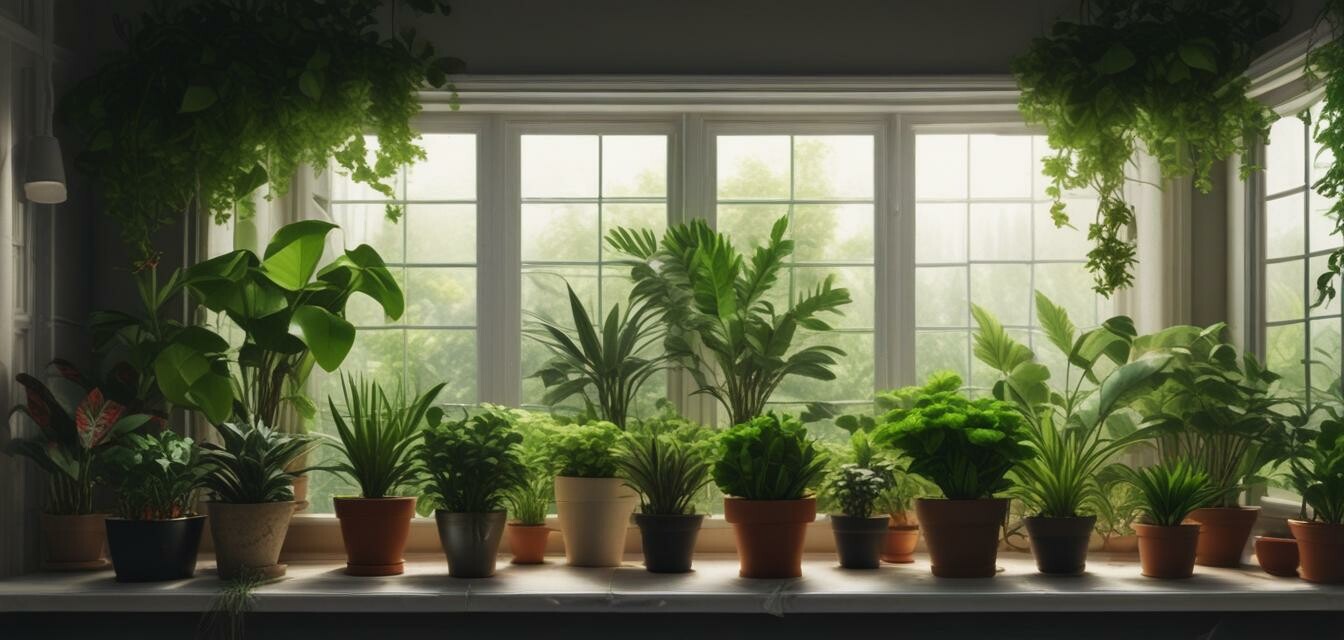
The Role of Light in Houseplant Health
Key Takeaways
- Different houseplants have varying light requirements, which influences their growth and vitality.
- Understanding light levels—bright, indirect, and low light—can help in selecting the right location for your plants.
- Utilizing reflective surfaces can enhance light availability for indoor plants.
- Monitoring your plants' responses to light is key for optimal care and maintenance.
When it comes to caring for houseplants, understanding the role of light is fundamental. Light not only supports photosynthesis but also influences how plants grow, thrive, and even bloom. In this article, we will explore how different light levels affect houseplant health and provide tips on how to keep your green friends thriving.
Types of Light Available for Houseplants
Before discussing how light affects houseplants, it's essential to understand the various types of light that exist in indoor settings:
| Light Type | Description | Best Plants for This Light |
|---|---|---|
| Bright Direct Light | Intense, full sunlight that directly hits the plant. | Succulents, Cacti |
| Bright Indirect Light | Sunlight that is filtered or diffused, ideal for most houseplants. | Fiddle Leaf Fig, Peace Lily |
| Low Light | Areas that receive little to no sunlight, typically farther from windows. | Spathiphyllum, Snake Plant |
The Impact of Light on Houseplant Health
Light is a critical factor in determining plant health. Here’s a breakdown of how different light levels can impact your houseplants:
Bright Direct Light
- Encourages fast growth and vibrant colors.
- May lead to sunburn if plants are not acclimatized.
- Ideal for desert plants and tropical species needing intense light.
Bright Indirect Light
- Supports steady growth and can help plants produce beautiful blooms.
- Reduces the risk of sunburn, making it suitable for a wide range of houseplants.
- Perfect for establishing a diverse plant collection across varying species.
Low Light
- Common in homes with few windows or where light is blocked.
- Plants may grow slower but will often adapt well.
- Low light varieties are perfect for small spaces or offices.
Choosing the Right Location for Your Houseplants
Finding the perfect spot for your plants can make all the difference. Here are some tips to help you choose the best location:
- Observe the sunlight patterns in your home at different times of the day.
- Use sheer curtains to filter direct sunlight, protecting sensitive leaves while allowing light in.
- Consider moving plants for a season to maximize their exposure to varying light conditions.
- Be mindful of nearby reflective surfaces that can enhance light availability.
Signs Your Houseplants Need More (or Less) Light
Understanding how your plants react to their light conditions is crucial. Here are some signs to look for:
| Light Condition | Signs of Adequate Light | Signs of Inadequate Light |
|---|---|---|
| Bright Direct Light | Vibrant leaves; steady growth | Leaf burn; dropping leaves |
| Bright Indirect Light | New growth; healthy foliage | Leggy stems; slow growth |
| Low Light | Stable leaves; some new growth | Yellowing leaves; stretching towards light |
Conclusion
Understanding the role of light is essential for houseplant owners. By observing and adjusting the light conditions, you can create an ideal environment for your green companions. Be patient and watch your plants thrive as you fine-tune their placement. If you are looking for additional resources on taking care of your plants, check out our Care Tips section for more insights!
Tips for Beginners
- Start with low-maintenance houseplants while you learn about light requirements.
- Experiment with different placements to find the best spot for each plant.
- Keep a journal of your plants' reactions to their surroundings to guide adjustments.
Pros
- Essential for photosynthesis and overall plant health.
- Helps in determining the best plants for your environment.
Cons
- Finding the right balance can be tricky, especially in low-light homes.
- Requires regular observation and adjustment.

